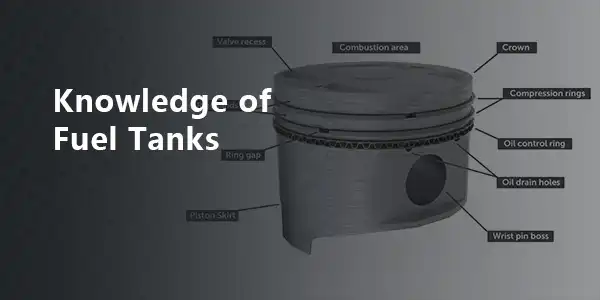Knowledge of Fuel Tanks
Introduction of fuel tanks
A fuel tank in the vehicle is an important component of the fuel system in an internal combustion engine. Fuel tanks are used to store automotive fuels such as gas, diesel fuel an petrol. Typically, fuel tanks are made of plastic polypropylene, regrind plastic, high-density polyethylene, ethyl vinyl alcohol, or plastic adhesives. At the same time, the fuel tank can also be made of other materials, such as steel, iron or aluminum, which can withstand high temperatures. For vehicle or construction equipment, the gas cap like 77300-33070 for Toyota is an integral part because it can protect the fuel in the tank from contamination.
Different material fuel tanks
Steel fuel tanks
The steel fuel tank is made of sheet metal stamping and welding up and down. Steel fuel tanks use steel with a high viscosity grade and ultimate strength. When exposed to external influences, the fuel tank deforms due to its viscosity, but remains leak-proof. The main disadvantage of steel fuel tanks is that they are highly corrosive. The odds of water getting into the fuel tank are good, as it can get inside as condensate, or be on the bottom with the fuel. Steel fuel tanks are preferred in diesel vehicles.
Aluminum fuel tanks
Aluminum fuel tanks are manufactured by stamping and welding. They are less prone to corrosion, lighter than steel fuel tanks, but aluminum fuel tanks can suffer from weld failure during operation, causing fuel leaks and are too costly. Aluminum fuel tanks are usually used in gasoline-driven vehicles.
Plastic fuel tanks
There are advantages and disadvantages to using plastic fuel tanks. The advantage is that they are lightweight and easy to move, and they can even take some impact, so there is not much risk of cracking or breaking when moving. The disadvantage is that plastics tend to weaken when exposed to high temperatures. So when this happens, the fuel tank can melt or crack due to its different composition than a steel or aluminum fuel tank.
The lifespan of plastic fuel tanks varies. Some say plastic fuel tanks last 25-30 years. Others say you can only count on 15-20 years. In fact, the lifespan of a plastic fuel tank depends on what kind of plastic the tank is made of. For example, fuel tanks made of high-density polyethylene last 30-40% longer than other plastic fuel tanks.
The main reason of fuel tank failures
The main cause of fuel tank failure is surface damage caused by sandblasting, and these colliding particles thin the tank walls and brackets. When the vehicle is moving, the frame deforms, the fuel tank parts lose strength, and the fuel tank forms cracks, resulting in the loss of the sealing of the fuel tank. The quality of the fuel can also cause damage to the tank. Diesel is hygroscopic, so it can absorb water which then corrodes the walls of the fuel tank requiring costly fuel component repairs (high pressure fuel pump, injector, fuel line). In view of this, the engineers seek to modify the design of fuel tanks and find the suitable materials. The most interesting solution is a fuel tank made of plastic. That’s why the leading world manufacturers are in process of transition to plastic fuel tanks.
 Track Your Order
Track Your Order




